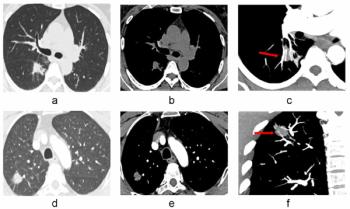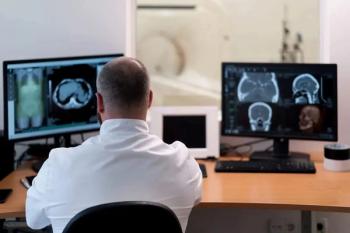
International Isotopes goes public with novel nuclear medicine strategy
Firm to develop ultra-high-resolution gamma cameraA Texas-based startup called International Isotopes is planning to take on the nuclear medicine market with a two-pronged business model that calls for manufacturing radioisotopes as well as a new
Firm to develop ultra-high-resolution gamma camera
A Texas-based startup called International Isotopes is planning to take on the nuclear medicine market with a two-pronged business model that calls for manufacturing radioisotopes as well as a new type of gamma camera to image them. The company believes that its gamma camera design could result in a system with 20 times the spatial resolution of existing products on the market. International Isotopes went public last month in an initial public offering that raised gross proceeds of almost $20 million.
International Isotopes sees a promising business opportunity in the market for radioisotope production, which is dominated by just a few players, such as Atomic Energy of Canada (AECL). AECL has a lock on the market for one of the most commonly used radioisotopes, molybdenum-99, and this has resulted in supply problems. A strike at an AECL reactor in June interrupted the supply of molybenum-99 for a week (SCAN 7/9/97).
International Isotopes believes that it can create an alternate supply of radioisotopes through the use of linear accelerator (linac) technology rather than nuclear reactors or cyclotrons. To this end, the company has acquired a linear accelerator that had been destined for the Superconducting Super Collider project, a massive project to build a giant, 53-mile-long atom smasher in Texas. The project was canceled by Congress in 1993 and its assets are being sold off by the state of Texas.
International Isotopes describes its linac as similar to systems in operation at Brookhaven National Laboratory and Los Alamos National Laboratory, with the exception that it has been redesigned to operate at a lower energy level, produce a higher beam intensity, and produce multiple radioisotopes, rather than just one. The linac has been reconfigured to produce an energy level of up to 70 million electron volts (MeV) and beam intensity of 1000 microamperes (1 mA). These specifications exceed those of most of the cyclotrons in the U.S., according to prospectus material the company has filed with the Securities and Exchange Commission.
International Isotopes believes that the linear accelerator can produce radioisotopes at one-fifth the cost and five times the volume of cyclotrons, and these radioisotopes can then be supplied to radiopharmaceutical companies for inclusion in their products.
"It is the company's strategy to supply currently used radioisotopes and to use its high-energy 70-MeV linac to manufacture many of the upcoming and potentially superior diagnostic and therapeutic pharmaceutical-grade radioisotopes," the prospectus states. "In addition, when the linac is fully operational, the company intends to manufacture and distribute finished radiopharmaceutical kits for the major and specialized radiopharmaceutical companies on a contract or joint-venture basis."
International Isotopes intends to produce the most commonly used radioisotopes in nuclear medicine, including molybdenum-99, thallium-201, gallium-67, indium-111, and palladium-103. It hopes to have the linac up and running by the second quarter of 1998, and to begin directly supplying radiopharmaceutical firms shortly thereafter. Until then, the company plans to acquire wholesale molybdenum-99 and neutron-produced therapeutic radioisotopes from other sources, such as Sandia National Laboratory and the South Africa Atomic Energy Commission, and distribute them to nuclear medicine departments at hospitals and clinics.
The company is building a new headquarters at a high-technology biomedical research park in Denton, TX, from which it plans to distribute the radioisotopes. Denton is 24 miles from the Dallas/Fort Worth International Airport and about 14 miles from Alliance Industrial Airport, which will enable the company to get its radioisotopes to customers at most locations in the U.S. within 12 to 24 hours. The company plans to have the administrative portion of the headquarters completed this month.
High-resolution gamma camera
. Once the linac facility is completed, International Isotopes plans to begin development work on a new high-resolution gamma camera based on technology the firm has licensed from Hospital Financial, which holds rights to technology developed by Ira Morgan, who is also chairman and founder of International Isotopes. Two patents in particular are mentioned in the prospectus, relating to high-speed single-photon counting cameras and camera configurations that minimize the noise associated with the scattering of low-energy photons. These inventions refine the resolution of penetrating radiation to the count of single photons, according to the company. The technology has been used in the development of a camera designed for industrial applications that has a spatial resolution of 0.5 mm. This compares with an average resolution of 10 mm on SPECT cameras and 4 mm with PET systems. Further details about the camera were not available, and company officials declined to comment because the firm is in an SEC-imposed quiet period due to the IPO.
Another intriguing device on the company's drawing board is a system it calls a pulsed plasma device, which could produce positron radioisotopes for use in PET imaging cameras and thermal neutrons essential for gadolinium neutron capture therapy, a type of external-beam radiation therapy. International Isotopes has proposed licensing the technology to Avogadro Energy Systems, which has built a prototype device.
International Isotopes went public Aug. 15 in an initial public offering of 2.2 million shares at $9 a share, resulting in proceeds of over $19.8 million before expenses. On its first day of trading on the NASDAQ Small Cap market, the offering reached a high of $10 a share before closing at around $9.25. As of last week, the company's stock was trading at around $9.38.
The company estimates that proceeds from the offering should fund its activities for the next 18 months. The funds will be used to pay off debt, complete work on the linac and gamma camera, start development of the pulsed plasma device, begin purchasing radioisotopes for its distribution program, and for general working capital purposes.
Among the risk factors cited by International Isotopes are larger competitors in the nuclear medicine market, the untested nature of its technology, limited sources for raw materials, and heavy government regulation in the radioisotope industry. However, the company believes that, in addition to its technology, one of its advantages is the experience of its management team. Morgan, who founded the company in 1995, comes from the industrial x-ray and testing industry, while the company's president and CEO, Carl Seidel, was previously with Du Pont Merck Pharmaceutical.
Newsletter
Stay at the forefront of radiology with the Diagnostic Imaging newsletter, delivering the latest news, clinical insights, and imaging advancements for today’s radiologists.






























